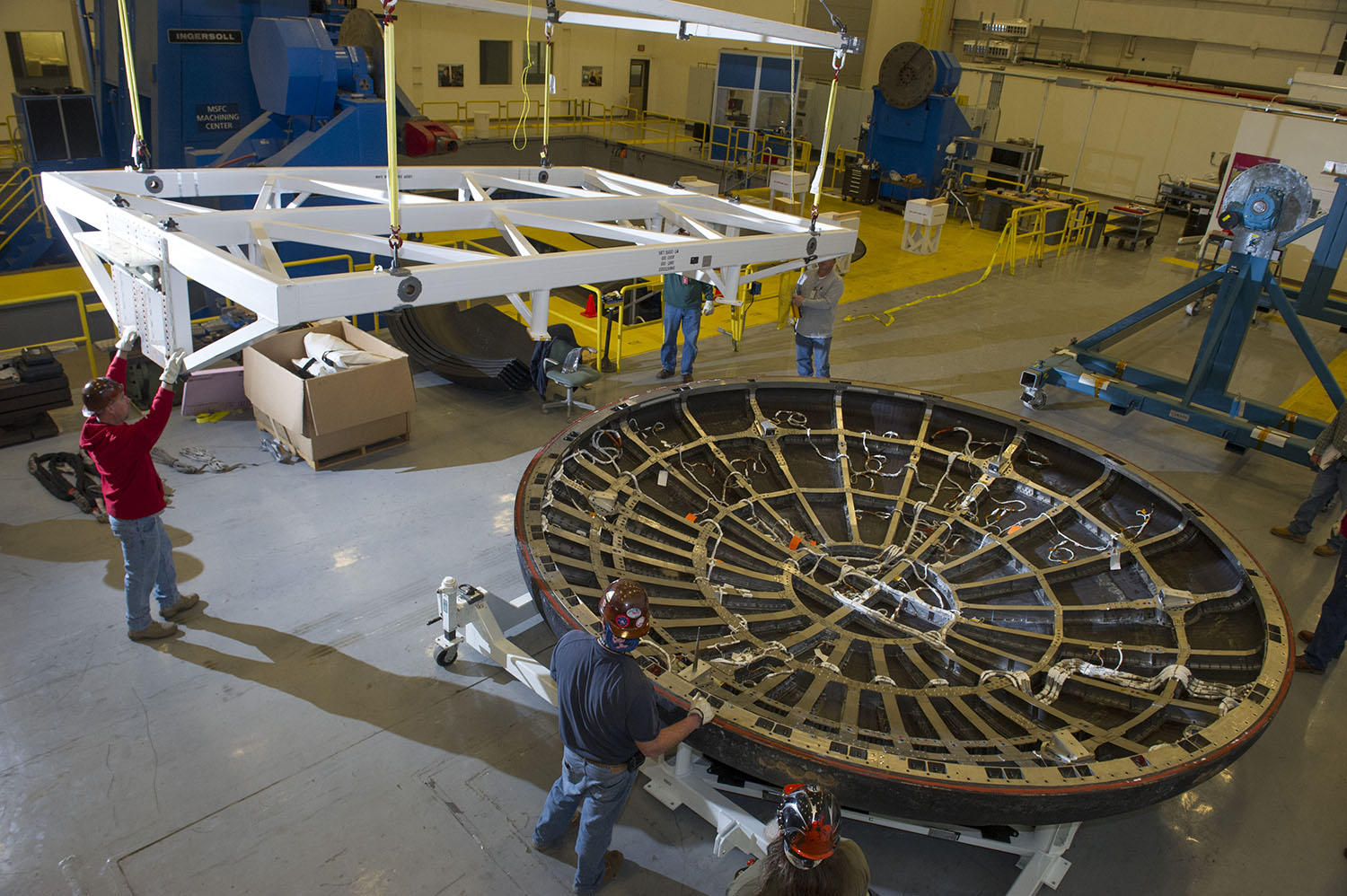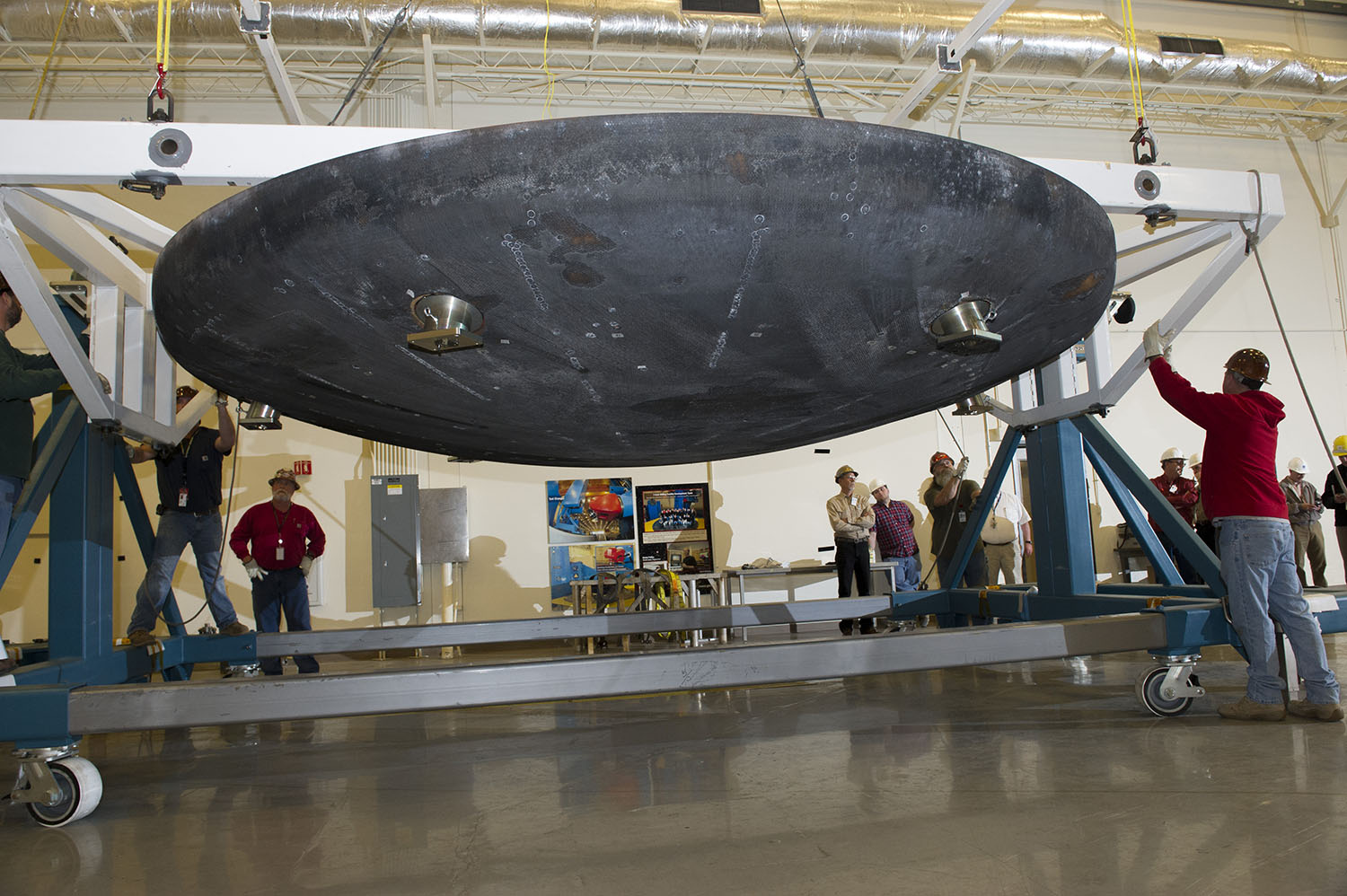
The heat shield for NASA’s Orion spacecraft that successfully survived a high-velocity re-entry during its December 2014 flight test, is continuing its journey, now at the agency’s Marshall Space Flight Center in Huntsville, Alabama. The heat shield arrived March 9 at Marshall, where experts from the Center and NASA’s Ames Research Center will extract samples of the ablative material, or Avcoat.
The heat shield was offloaded and transferred to a large support structure to allow to the engineers to conduct their work. The samples will be used to help measure the char layers and degree of erosion or ablation. They’ll also extract the various instruments in the heat shield to assess their performance.
“Marshall was asked to aid in this effort because of our experience in dealing with large structures and fixtures that can accommodate a 13-foot in diameter heat shield,” said Larry Gagliano, Marshall’s deputy project manager for the Orion Launch Abort System. “The support fixture can rotate in a vertical or horizontal position to allow for core sample removal and close up imaging of the heat shield.”
After the analysis is complete, the heat shield will be loaded into the 7-axis milling and machining center, for removal of the remaining Avcoat material and then will be shipped to NASA’s Langley Research Center in Hampton, Virginia, for water impact testing.
Heat Shield Technology
The heat shield consist of a fiberglass-phenolic honeycomb structure that fits over Orion’s titanium skeleton and carbon-fiber skin. Each of the 320,000 cells is filled with an ablative material that provides some insulation and consumes heat energy by chemical decomposition and gas release.
“Our team put a lot of hard work into Orion’s first test flight and it’s exciting to see how well the heat shield performed,” said Terry Abel, project manager at Lockheed Martin in Huntsville. “We look at this task as a large part of Orion’s success – the heat shield has to perform well and it’s our job to see if we can improve upon Orion’s first flight.”
Orion’s heat shield experienced much higher heating levels and temperatures than that of the space shuttle tile systems. The heating was higher because Orion returned from a farther distance than the space shuttle ever experienced, resulting in a faster and hotter re-entry.
For the first test flight of Orion, the Avcoat surface reached temperatures of about 4,000 degrees Fahrenheit. Instrumentation in the Avcoat and back shell tiles measured the rise of the surface and internal temperatures during re-entry as well as heating levels and pressures. Additional instrumentation in the Avcoat recorded how the surface recedes as it consumes heat energy.
Avcoat is designed to burn away, or ablate, as the material heats up, rather than transfer the heat back into the crew module. At its thickest, the heat shield is 1.6 inches thick. Roughly 20 percent of the Avcoat eroded as Orion traveled through Earth’s atmosphere.
In the future, Orion will launch on NASA’s new heavy-lift rocket, the Space Launch System. More powerful than any rocket ever built, SLS will be capable of sending humans to deep space destinations such as an asteroid and eventually Mars.




























